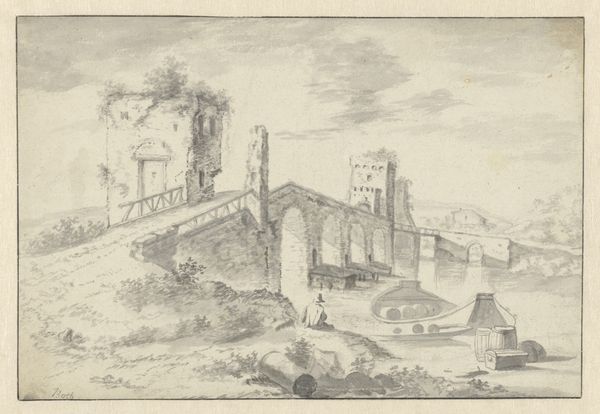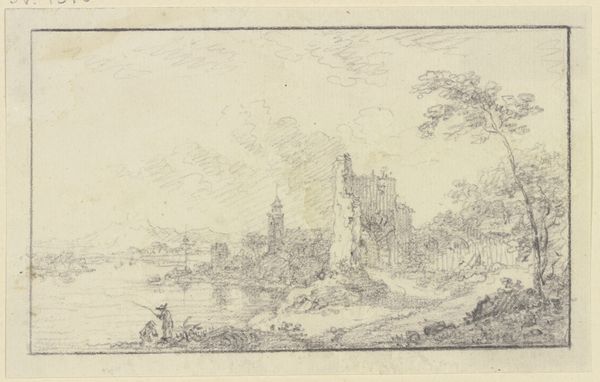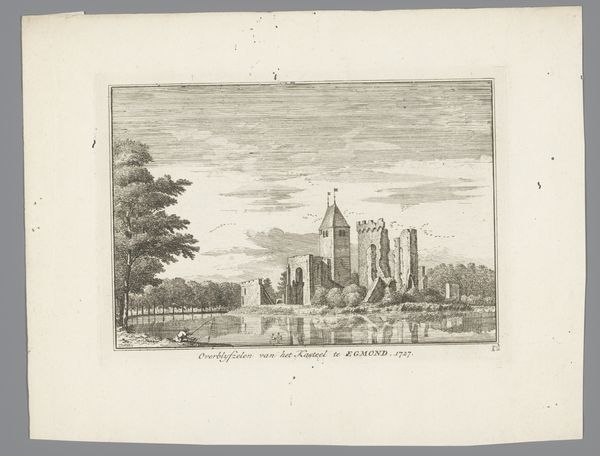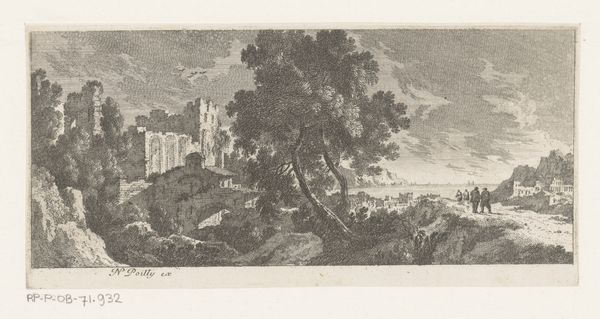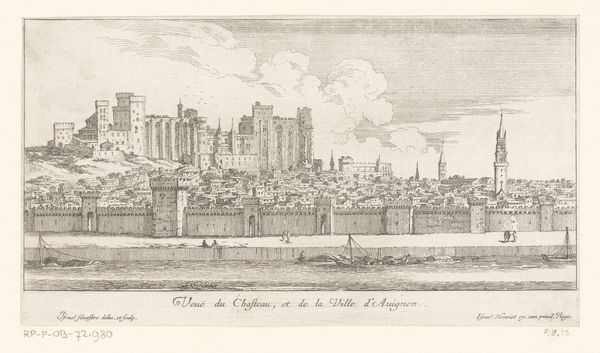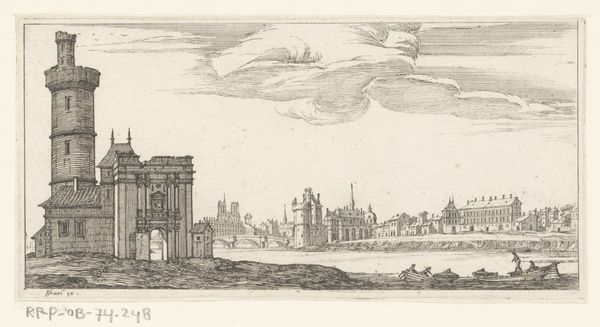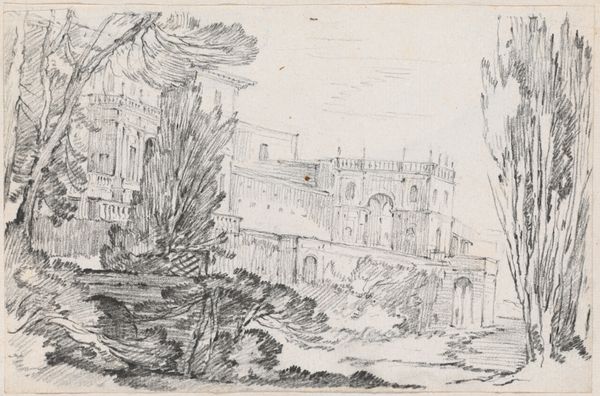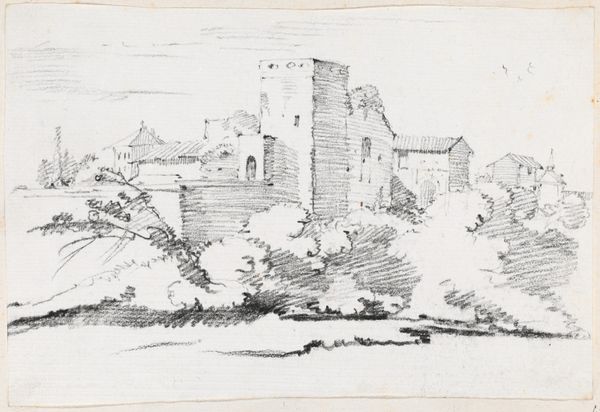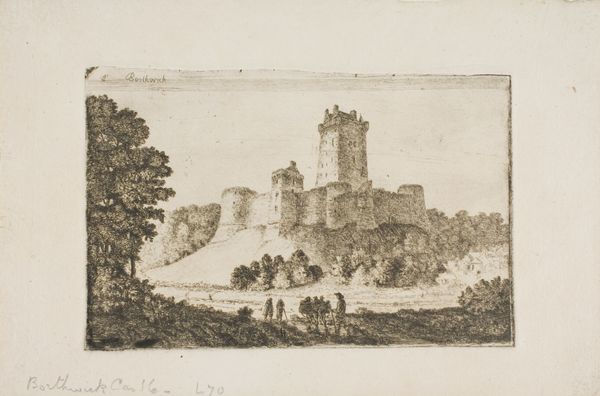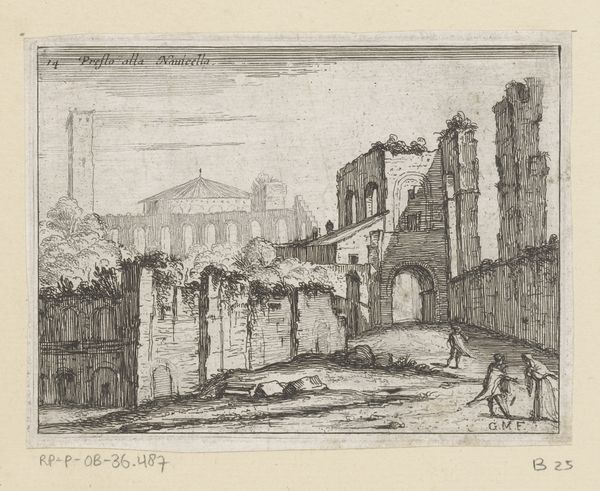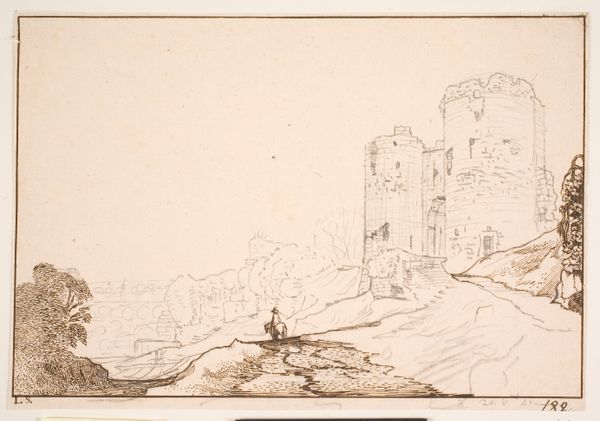
print, engraving, architecture
#
baroque
# print
#
landscape
#
engraving
#
architecture
Dimensions: height 95 mm, width 129 mm
Copyright: Rijks Museum: Open Domain
Curator: Welcome. Before us, we see a work entitled "Ruïnes van Palazzo Maggiore te Rome" created around 1629 by Giovanni Battista Mercati. It’s an engraving, showcasing a landscape with architectural elements. Editor: A striking depiction! The pervasive atmosphere of decay is immediate, melancholic almost. Note how Mercati employed finely etched lines to create varying textures—rough stone versus softer foliage. Curator: Absolutely, consider too that Mercati was active in Rome amidst a strong interest in classical antiquity. This interest spurred not only archeological ventures but also this, the genre of vedute or landscape views, especially ruinscapes like this one. Editor: And observe the composition, carefully divided horizontally. The ruins anchor the scene in the middle ground, beyond which is a lightly-indicated background of soft hills. In the foreground, almost hastily drawn foliage guides our gaze—it's as if we are stumbling upon this decaying magnificence. The verticality of the aging structures also creates dynamism. Curator: Precisely. It highlights how such images gained popularity and were purchased as souvenirs by tourists visiting Rome, capturing a specific attitude towards the past and the classical world itself. They tell a story of historical process, change, and even perhaps reflect a cultural understanding of empires in decline. Editor: This image also suggests the ways architecture operates as a record of civilization's life cycles—from its structural integrity, through its zenith of usage, and on to the stages of erosion, abandonment, and subsequent transformation by the natural elements. This Baroque conception acknowledges flux as integral. Curator: Indeed. The artwork makes a statement about how the remnants of classical architecture functioned as potent symbols within 17th-century cultural dialogues and political contexts, reflecting on empire, legacy, and the passage of time. Editor: Well, by concentrating on these stylistic facets we have also seen how deeply such technical elements may resonate thematically. Curator: Precisely. The historical setting helps in considering the meaning, and the technical application highlights artistic intentionality.
Comments
No comments
Be the first to comment and join the conversation on the ultimate creative platform.
